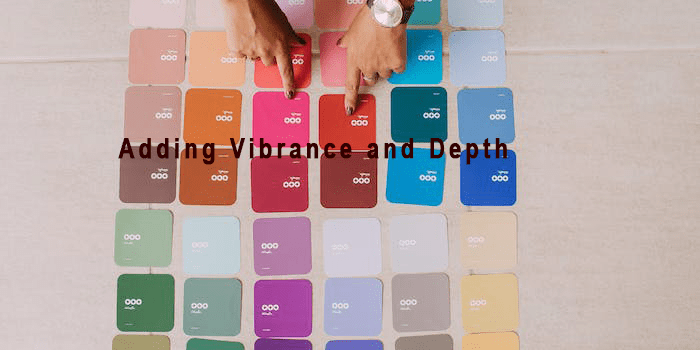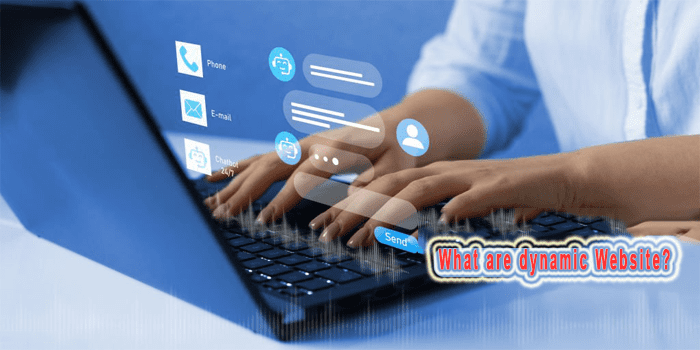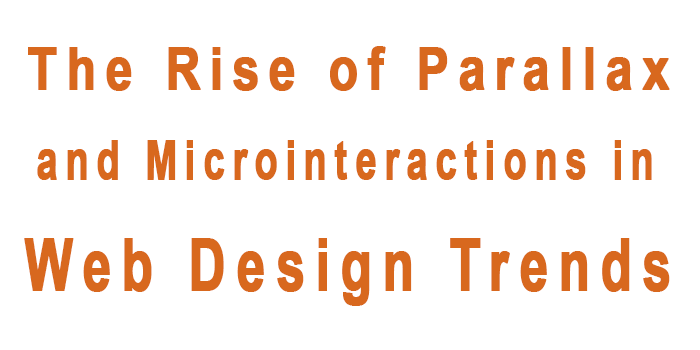Table of Contents: Web Design
1. Responsive Design: An Essential Component of Web Design Trends

Responsive design refers to the practice of creating websites that can adjust and adapt to different devices and screen sizes. With the increasing use of smartphones and tablets, it has become imperative for websites to provide a seamless and intuitive browsing experience across all platforms. By utilizing flexible grids, images, and CSS media queries, responsive design allows web pages to automatically resize and reformat themselves to fit the user’s screen. This not only enhances user experience but also helps improve search engine rankings, as Google now prioritizes mobile-friendly websites.
2. Mobile-Friendly Design: Catering to the On-the-Go User
As more people rely on their smartphones and tablets to access the internet, designing mobile-friendly websites has become crucial. Mobile-friendly design involves optimizing websites specifically for smaller screens, ensuring that users can easily navigate and interact with the content on their mobile devices. Mobile-friendly websites typically have simplified layouts, streamlined navigation menus, and larger touch targets to accommodate fingertip interaction. These design choices help enhance user experience, reduce bounce rates, and increase conversions.
3. Minimalism: Embracing Simplicity in Web Design
Minimalism has become an increasingly popular trend in web design, focusing on simplicity, clarity, and functionality. Minimalist websites feature clean layouts, ample white space, and uncluttered designs. By removing unnecessary elements and distractions, minimalist design allows users to focus on the key message or purpose of a website. This design approach not only creates a visually appealing aesthetic but also promotes faster loading times and improved usability.
4. Flat Design: A Clean and Modern Approach
Flat design is a minimalist design style characterized by its use of clean lines, simple shapes, and vibrant colors. It complements the principles of responsive and mobile-friendly design, as flat elements can easily scale and adapt to different screen sizes without losing visual appeal. Flat design promotes a visually engaging user interface while maintaining simplicity and clarity. Its lack of visual embellishments and skeuomorphic details allows for faster loading times and a modern, streamlined aesthetic.
5. Bold Colors and Gradients: Adding Vibrance and Depth


In recent years, web designers have embraced bold colors and gradients to make websites visually striking and memorable. Vibrant colors create a sense of excitement and grab users’ attention, while gradients add depth and dimension to flat design aesthetics. Bold color choices and gradient backgrounds can be applied to various elements on a website, including buttons, menu bars, and backgrounds, creating visual interest and enhancing overall user experience.
6. Simplicity in Focus: Large Typography
Large typography is a contemporary web design trend that focuses on using oversized fonts as a powerful design element. By leveraging large typography, web designers can create stronger visual hierarchies, attract attention to important content, and evoke certain moods or emotions. Larger font sizes also make text more legible on smaller screens, contributing to a better user experience across devices. Combined with minimalistic layouts, large typography can create impactful and aesthetically pleasing designs.
7. Enhancing User Experience with Scrolling
Scrolling has become an integral part of how users interact with websites, especially on mobile devices. Web designers are embracing scrollable designs to enhance user experience, as it allows for continuous storytelling, simplified navigation, and effortless browsing. By incorporating parallax effects, animations, and dynamic visual elements into their scrolling designs, designers can create engaging and immersive experiences that captivate users and encourage them to explore more content.
8. Parallax: Creating Dynamic and Engaging Websites


Parallax is a popular web design technique that involves showcasing background images at different speeds while scrolling, creating a sense of depth and interactivity. It adds a dynamic element to websites, making them visually captivating and memorable. Parallax scrolling is often used to tell a story, highlight specific content, or create an engaging user experience. By integrating parallax effects judiciously, web designers can create immersive and visually stunning websites that leave a lasting impression on visitors.
9. Microinteractions: Adding Delight to User Interface
Microinteractions are subtle yet impactful design elements that enhance user engagement and provide feedback during user interactions. These small animations, sounds, or visual cues are designed to provide real-time responses to users’ actions, making the overall experience more interactive and enjoyable. From simple hover animations to complex form validations, microinteractions add a human touch to digital interfaces, adding delight and personality to the user experience.
10. Illustrations and Custom Graphics: Adding Personal Touch
Illustrations and custom graphics have become increasingly popular in web design as they allow for a unique and personalized visual identity. From hand-drawn illustrations to meticulously crafted digital graphics, custom visuals can convey a brand’s personality, evoke emotions, and create a memorable experience for users. By utilizing custom graphics, web designers can create a cohesive and distinctive visual language that enhances brand recognition and sets websites apart from competitors.
11. Cinemagraphs and Full-Screen Videos: Captivating Users
Cinemagraphs and full-screen videos are powerful web design tools that bring static images to life and captivate users’ attention. Cinemagraphs are still photographs with subtle, repeated movements, creating mesmerizing moments that blend the line between photo and video. Full-screen videos, on the other hand, immerse users in captivating visual narratives. By incorporating cinemagraphs and full-screen videos into web design, designers can craft visually stimulating and immersive experiences that leave a lasting impact on visitors.
12. Split Screens and Asymmetric Layouts: Breaking the Mold
Split screens and asymmetric layouts have gained popularity in web design as they deviate from traditional symmetrical page structures and introduce visual interest. Split screens are divided into two or more sections, displaying different content side by side, while asymmetric layouts use an intentional imbalance in the placement of elements for a more dynamic and unique design. These non-conventional design choices help websites stand out and offer an element of surprise to users, creating memorable and captivating browsing experiences.
13. Geometric Shapes: Bringing Order and Visual Interest
Geometric shapes have proven to be versatile design elements that add structure, balance, and visual interest to web pages. Triangles, circles, squares, and polygons can be used to create patterns, frames, and background shapes, providing a strong visual foundation for a website’s layout. By incorporating geometric shapes, web designers can bring order and organization to complex interfaces, guide users’ attention, and convey a sense of modernity and professionalism.
14. Minimal Navigation: Streamlining User Interaction
Minimal navigation is a design approach that focuses on simplifying navigation menus and reducing clutter to streamline user interaction. This trend often involves utilizing hidden menus, hamburger icons, or sticky navigation bars that disappear when not in use. By minimizing the visibility of navigation elements, designers can create a cleaner and more immersive experience for users, allowing them to focus on the content without distractions.
15. Creative Typography: Infusing Personality into Designs
Creative typography is an effective way to infuse personality and distinctiveness into web designs. Apart from size, font choice, and arrangement, creative typography can involve custom lettering, decorative typefaces, or artistic arrangements of textual content. With unique typographic elements, designers can create an aesthetic expression that conveys a brand’s identity, evokes emotions, and enhances the overall visual impact of a website.
16. Dark Themes: Stylish and Mysterious Aesthetics
Dark themes have gained popularity for their sleek, stylish, and mysterious aesthetics. While traditionally associated with gaming or entertainment websites, dark themes are now being adopted by various industries. The use of dark backgrounds with light or vibrant accents creates a striking contrast that draws attention to important content. Dark themes not only offer a unique visual identity but also reduce eye strain in low-light environments, making them a popular choice among users.
17. Neomorphism: A Fusion of Skeuomorphism and Flat Design
Neomorphism is a design style that combines elements of skeuomorphism and flat design, resulting in a visually engaging yet minimalist aesthetic. Neomorphic interfaces create a sense of physicality by utilizing subtle shadows, highlights, and textures, reminiscent of real-world objects. This design trend brings depth and tactility to digital interfaces while maintaining the simplicity and usability associated with flat design. Neomorphism has gained popularity as it offers a fresh and modern approach to user interface design.
18. Geometric Grids: Organizing Content with Precision
Geometric grids are a useful tool for organizing content and ensuring consistency in web design. By aligning elements to a grid system, designers can create a harmonious layout that provides visual order and clarity. Grid-based designs offer a flexible framework for positioning text, images, and other elements, making it easier to rearrange or update content. Geometric grids play a crucial role in responsive design, as they help maintain alignment and readability across different devices.
19. Broken Grid Layouts: Creating Unique and Dynamic Designs
Breaking away from traditional grid structures, broken grid layouts introduce an intentional misalignment of elements for a more dynamic and unconventional design. By overlapping or displacing elements across a web page, designers can create a sense of depth, hierarchy, and visual interest. Broken grid layouts allow for more creativity and unique compositions, enabling websites to stand out and make a memorable impression on visitors.
20. Hero Images: Making an Impressive First Impression
Hero images are large, attention-grabbing visuals placed prominently at the top of a web page, often accompanied by minimal text or call-to-action buttons. These impactful images serve as an introduction to the website and aim to capture users’ attention immediately. Whether using high-quality photographs, illustrations, or custom graphics, hero images create a visually stunning first impression that sets the tone and engages users from the moment they land on a site.
21. Data Visualization: Presenting Information in a Visual Format
Data visualization is a powerful tool used to present complex information in a simplified and engaging manner. Through charts, graphs, infographics, and interactive elements, designers can transform data into visually appealing and easy-to-understand visuals. Effective data visualization not only enhances comprehension but also makes information more accessible and memorable to users. By conveying data in a visual format, websites can effectively communicate their message and engage users more effectively.
22. Scroll-Triggered Animations: Interactive and Engaging Websites
Scroll-triggered animations bring web pages to life by adding dynamic and interactive elements as users scroll down. From subtle fade-in effects to more elaborate animations, these responsive animations engage users and create a sense of interactivity with the content. Scroll-triggered animations can be used to present information in a digestible manner, highlight key features, or simply add visual interest and delight to the user experience.
23. Voice Search Optimization: Enhancing Accessibility
Focus on conversational keywords: Voice searches tend to be more conversational than traditional text-based searches. Incorporate long-tail keywords and phrases that reflect how people commonly ask questions verbally. Think about the kind of questions your target audience might ask related to your products, services, or industry.
Create FAQ-style content: Frequently Asked Questions (FAQs) format works particularly well for voice search optimization. Identify common questions or needs your audience may have and create informative content that provides concise, helpful answers. This can increase your chances of appearing in featured snippets, which often get read out loud by virtual assistants.
Optimize for local search: Voice searches are often location-based, as users often ask for recommendations or information specific to their surroundings. To enhance local search accessibility, make sure to include your business name, address, and phone number (NAP) on your website and claim your business on relevant directory listings like Google My Business.
Improve website load time: Voice searches prioritize websites that load quickly and provide a seamless user experience. Optimize your website’s speed by compressing images, using caching plugins, and minimizing HTTP requests. Improving page load time not only helps with voice search optimization but also enhances overall user accessibility.
24. Chatbots: Revolutionizing Customer Support
Improved Response Time: Chatbots can provide instant responses to customer inquiries, eliminating the need for customers to wait in long queues or for a representative to become available. This significantly reduces response time and enhances customer satisfaction.
Scalability: Chatbots can handle multiple conversations simultaneously, making them highly scalable. They can efficiently manage a large volume of inquiries without compromising response quality or time, providing consistent support even during peak hours.
Personalization: Advanced chatbots are equipped with machine learning algorithms that enable them to analyze customer data and personalize responses. They can recognize customer preferences, previous interactions, and purchase history to provide tailored recommendations and solutions, enhancing the personalized experience.
Cost-efficiency: Employing chatbots instead of a large customer support team can significantly reduce costs for businesses. Chatbots can handle a substantial number of customer interactions at a fraction of the cost compared to maintaining a full customer support staff.
25. Virtual Reality Integration: Immersive Web Experiences
Virtual Reality (VR) integration refers to the process of incorporating virtual reality technologies into web experiences, making them more immersive and interactive for users. This integration allows users to explore virtual environments, interact with objects, and even engage in activities that replicate real-world experiences.
The immersive web experiences created through VR integration are accessed through web browsers or VR headsets. These experiences can range from simple 360-degree videos to fully interactive and three-dimensional virtual worlds. By combining HTML, CSS, and JavaScript with VR technologies, developers can create captivating and engaging web-based VR applications.
There are several benefits to incorporating VR into web experiences. First and foremost, it enhances user engagement by providing a more immersive and realistic experience. Users can feel as if they are physically present in a virtual environment, which can be especially useful for training simulations, virtual tours, or showcasing products or spaces.
VR integration also opens up new possibilities for web-based applications. For example, architects and interior designers can offer virtual tours of their designs, allowing clients to experience the space before it is built. Educational institutions can provide immersive learning experiences, enabling students to explore historical sites or perform scientific experiments virtually. E-commerce platforms can create virtual showrooms where users can browse and purchase products, all within a virtual environment.


Powered by Bestwritebot.com , Otips , Free Video Downloader , softwarestore , free online game hub


